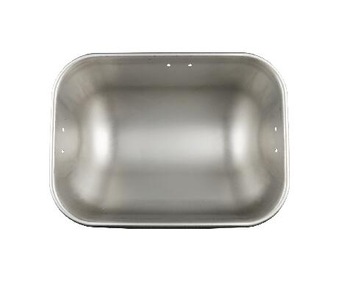In recent years, eggplant verticillium wilt and bovine blight disease have become the two diseases with the highest incidence in eggplant production. They are often severe in rainy years and seasons, lighter production cuts are 20% to 30%, and heavy can reach 60% or more. , causing great economic losses to the vegetable farmers. Eggplant verticillium wilt also known as half crazy, black heart disease, Mianbing disease, also known as egg, rotten eggplant, the former harm the leaves, the latter mainly damage the fruit. First, the common conditions of disease Verticillium wilt, M. blight epidemic disease conditions are basically the same. Rainy weather, high temperature and high humidity all contribute to the widespread epidemic of the two diseases. The suitable temperature for disease onset is 20°C to 30°C. In this range, the higher the humidity, the higher the incidence. In addition, low moisture in vegetable fields, soil viscous weight, extensive management, continuous cropping, overgrown with weeds, overgrown plants, insufficiently cooked organic fertilizers, and the harm of underground pests are all conducive to disease occurrence. Second, the symptoms of Verticillium wilt symptoms: the main damage to the leaves, in the growth period of eggplant can be the incidence of the most serious results. In the early stage of disease, yellowish spots appear between the veins of the lower leaves and gradually develop to the sides of the leaves or the entire leaves. The diseased leaves develop clams during the day and recover at night. The color changes from yellow to brown, and the edges roll upwards. Finally, the entire leaf is dead and falls, and the disease occurs. In severe cases, it can develop into whole plants. Symptoms of M.blight disease: mainly harm the fruit, but also damage the leaves, stems and flowers. Fruits are affected when they are close to maturity, so they suffer more from the middle and lower parts of the field. Initially, a nearly circular dark brown, moist, diseased spot appeared on the fruit. When the disease conditions were appropriate, it quickly expanded, and gradually caused the entire fruit to rot. When the humidity in the field was large, the white mold layer of mycelium was covered with the lesion. The diseased leaves had obvious ring patterns, and the stems died of dryness when they were seriously infected. Third, comprehensive control 1. Seed disinfection. Select disease-resistant varieties, such as Changkee No. 1; Disinfect seeds before sowing, such as soaking in warm water at 50°C to 55°C for 7 to 8 minutes or in formalin solution at 1000 times to soak for 15 minutes. Direct sowing after net. 2. The rotation is down. Avoid joint or adjacent works with tomato, pepper and other solanaceous vegetables. 3 using plug seedlings. 1 hole in the plug 1 naked, evenly distributed, adequate nutrients, developed roots, planting does not hurt the roots or less injury. Increased disease resistance and reduced chance of infection. 4. Apply adequately cooked organic fertilizer. 5. Strengthen post-planting disease control management. First, the garden was completely cleared after harvesting. All the plants were brought out of the field together with the diseased plants for destruction. They were not allowed to be thrown away; the second was timely cultivating and soil cultivation to promote the growth of the plant roots; the third was moderate close planting and the removal of field weeds. Remove the old leaves at the bottom to improve ventilation and light transmission in the field. 6. Chemical control. At the time of colonization, spread 50% carbendazim WP 5 kg mixed soil 100 kg into the planting hole per acre; after planting, use 70% of dexcone wettable powder 500 times or 50% benomyl 700 times spray The roots of plants are sprayed once every 7-10 days. Since these two diseases are relatively serious diseases during the growth period of eggplant, the plants in the flowering stage are in high temperature and rainy season and should be prevented every 7 to 10 days. Spraying: 58% of Artemisia Mn-Zn 500 times or 64% of Anti-Virus 500 times or 40% of Ethylphosphine 300 times, which can play a good effect.
The sow through is our Honde brand of high quality sow raising equipment, made of high quality stainless steel SST 304 and featuring automatic welding technology with a thickness of 1mm to 1.2mm and the robustness of the sow through. The depth of the sow through is moderate, which allows it to contain enough food and avoid food waste. The size of the sow through There are many, to meet different needs, it is very convenient. At the same time, the edge of the sow through is smooth and strong, preventing pigs from being harmed while using it. the sow through makes it easy and convenient for your sow to feed, and sows that have used the sow through grow well.
|
Art
|
Spec
|
Thickness
|
Material
|
|
1231
|
455*370*230mm
|
1mm
|
SST 304
|
|
1231
|
455*370*230mm
|
1.2mm
|
SST 304
|
|
1233
|
530*390*230mm
|
1.2mm
|
SST 304
|

Sow Trough
Sow Trough,Sow Plastic Trough,Plastic Sow Feed Trough,Sow Feeding Trough,Pig Feed Trough
HuangHua FengYi Honde Metal Factory , http://www.farrowingcratesfromchina.com
